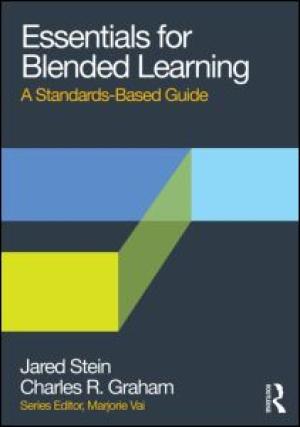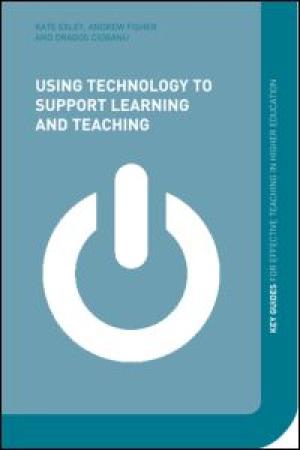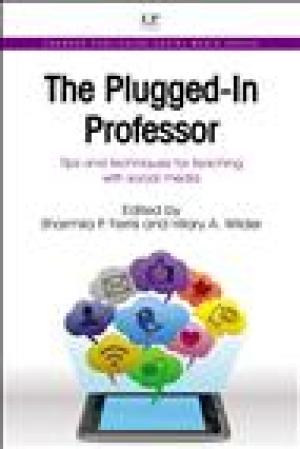Resources
The research discussed in this article looked at the impact of students having laptops in class that were being used for non-course related tasks, such as surfing the web.
Integrate digital tools into the humanities classroom in ways that will improve the undergraduate learning experience
Many faculty are beginning to experiment with social media, incorporating Facebook, Twitter, and other services into their classes. What are the legal implications of the use of social media in teaching? What should faculty know before trying them out?
Incorporating Wikipedia into the curriculum as a collaborative environment or primary source affords students with the opportunity to develop their media literacy, improve their writing skills, and learn appropriate ways to use Wikipedia as an academic resource.
Clickers can be used to increase student-student and student-instructor interactions, to assess student preparation and learning, and to probe students' opinions or attitudes.
Podcasting is a digital technology that allows listeners to download course audio and video files, including both instructor-created and student-created content, through the RSS-based subscription mode and listen to them anywhere, anytime.
Full-length videos and video clips can be very useful in teaching. However, it is important to consider ahead of time what you hope your students will learn from the videos.

Essentials for Blended Learning: A Standards-Based Guide provides a practical, streamlined approach for creating effective learning experiences by blending online activities and the best of face-to-face teaching. This guide is: Easy to use: Clear, jargon-free writing; illustrations; and references to online resources help readers understand concepts. Streamlined: A simple but effective design process focuses on creating manageable activities for the right environment. Practical: Real-world examples from different subject areas help teachers understand principles in context. Contemporary: The variety of modern, connected technologies covered in the guide addresses a range of teaching challenges. Forward-Looking: The approach bridges the gap between formal classroom learning and informal lifelong learning. Standards-based: Guidelines and standards are based on current research in the field, relevant learning theories, and practitioner experiences. Effective blended learning requires significant rethinking of teaching practices and a fundamental redesign of course structure. Essentials for Blended Learning: A Standards-Based Guide simplifies these difficult challenges without neglecting important opportunities to transform teaching. This guide is suitable for teachers in any content area. (From the Publisher)

Click Here for Book Review Abstract: The climate of Higher Education is changing rapidly. The students are more likely to see themselves as consumers and have increasingly high expectations regarding teaching and learning. Universities are in part aiming to meet this need by increasing the use of technology; for example, whether to increase access to teaching materials outside the classroom or to make lectures more interactive. Although there is no illusion amongst Higher Education intuitions that technology is a panacea, it is clear that technology is a vital tool in meeting expectations and one that will be used more and more. Consequently the context of this book is one in which technology needs to be understood as part of an overall teaching practice. Technology continues to move on a pace and is used increasingly within Higher Education to support and enhance teaching and learning. There are books which are steeped in technical detail and books which are steeped in theoretical pedagogy with little discussion about the impact on learning and student/teacher behaviour. Using Technology to Support Learning and Teaching fills a gap in the market by providing a jargon free (but pedagogically informed) set of guidance for teaching practitioners who wish to consider a variety of ways in which technology can enrich their practice and the learning of their students. It integrates a wide range of example cases from different kinds of HE institutions and different academic disciplines, illustrating practicable pedagogies to a wide range of readers. It is full of advice, hints and tips for practitioners wanting to use technology to support a style of teaching and learning that is also built on sound pedagogical principles. It will provide a quick user-friendly reference for practitioners wanting to incorporate technology into Higher Education in a way that adheres to their learning principles and values . This book is primarily for teaching practitioners, particularly those who are new to the industry.This book would also prove useful on training courses for practitioners; such as the Postgraduate Certificate for Higher Education. The authors also intend that the book be of value to newer teachers (perhaps taking teacher training programmes) who wish to see where recommended approaches link to pedagogy. (From the Publisher)

Click Here for Book Review Abstract: Provides a cutting-edge resource for academics and practitioners in effective ways of reaching today’s students through the use of their favorite tool, social media Outlines a range of strategies taking advantage of the unique learning styles and habits of net generation learners Exposes students to ways in which these technologies can be used in their professional and personal lives Reinforces students' growth as productive, reflective, and involved twenty-first century citizens New technologies are transforming the way students work. The Plugged in Professor provides a timely and exceptional resource for using social media and other new technologies to help college students meet both general and discipline-specific objectives. The title covers techniques built around well-known social networking technologies, as well as other emerging technologies such as mobile phone and tablet apps. With a practical focus and reader-friendly format, this book shows educators how to apply techniques in each technology, and includes clear student learning objectives, step-by-step directions, observations and advice, and supplemental readings and resources. Twenty-five chapters by leading contributors cover key aspects of new technologies in education, in four parts: Writing, research and information fluency; Communication and collaboration; Critical thinking and creativity; and Integrative learning. Readership: Educators in higher education, academics, teachers, and all those who wish to develop their techniques to more effectively reach the Net Generation will find this book useful. (From the Publisher)